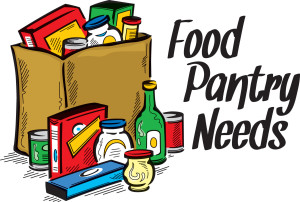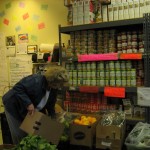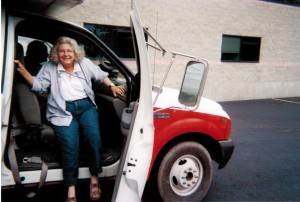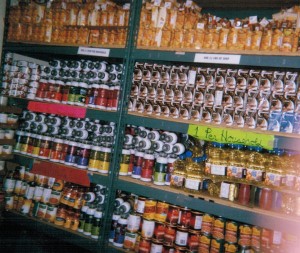This was almost the last weekend.

There’s only one more weekend left at Mower’s Meadow Flea Market this year. I’ll be there the Saturday and Sunday after Thanksgiving and then that’ll be it for awhile. I understand the flea market doesn’t open weekends again until May.
Don’t quote me on that. I’m not sure. But, one thing I’m sure about: I plan to be there every weekend next season. The hunger book, the donation jar, and I plan to be at Mower’s Meadow Flea Market next season.
I was at a different spot at the flea market every weekend. And, I really enjoyed being there. The people at the other booths were friendly, open, and interested in my booth. I got many tips and tried them all. It was obvious to everyone that I really didn’t know much about flea market marketing. I still don’t know much but my booth presentation has definitely improved.
Thank you to each and every one who bought copies of “I Don’t Hang Out in Churches Anymore”. I doubt if “The Ketchup Sandwich Chronicles” will be available by then but I working on it every day.
The title “I Don’t Hang Out in Churches Anymore” was named by Cullen Thomas and it was well chosen. Many people who picked up the book on the table were bothered by the title because they didn’t understand it. However, it definitely attracted attention.
For those with questions, the title referred to an “unhoused” congregation serving people outside the sanctuary. And, the food pantry was definitely outside the boundary of the sanctuary. The food pantry was, in fact, in the basement.
This story isn’t about how to fix or save or change a church. Nor is it, really, a story about a church at all. In fact, it’s not a manual about anything. It’s a story about how I discovered hungry people in the basement of the building in a tiny food pantry in the corner room.
A memoir, this story tells the truth as I remember it.
If you haven’t had a chance to read this book, it’ll be available at thurmangreco.com during the winter unless I find an indoor weekend flea market that’s appropriate for a table of books and open on the weekend.
My goal is to offer Reiki therapy and tarot readings in addition to the books at the flea market in the future.
But, whether I offer Reiki and tarot or not, I plan to be at a table selling both “I Don’t Hang Out in Churches Anymore” and “Healer’s Handbook”. When “Ketchup Sandwich Chronicles” comes out, I’ll add it to the stack!
See you there!
Thurman Greco
Please refer this article to your preferred social media network.

Summer Came and Went. And a book signing…

Please join me.
You are invited to attend my Author’s Reading and book signing on Saturday morning, September 22nd at 10:00 am on the grounds of the Mower’s Meadow Flea Market.
Refreshments will be served.
School is starting. And, once again, the focus of my life has adjusted itself. Hunger takes us all to new places that we never thought we would go.
For me, I spent the past two years writing my hunger book. I felt as if I’d gone into a cave…a writer’s cave. And, of course, with all this time in the cave, the inevitable finally happened: a book signing.
I finished the book! Not only that, I’m working on the follow-on volume. But, that’s getting off message.
A book signing is always appropriate in September.
Where? I’m selling the book at the Mower’s Meadow Flea Market in Woodstock. Somehow, I feel this was the logical direction I was headed from the first day: a book signing.
I sell the book….and a lot more. While selling the book, people purchase other used books and gently used items to raise money for the hungry.
I’m selling items and collecting donations to buy peanut butter for a pantry which doesn’t have any on the shelves on the day I call the pantry. Why peanut butter?
Peanut butter doesn’t need refrigeration.
It can be eaten by people who no longer have teeth.
Peanut butter has a generous shelf life.
For homeless people, peanut butter is a staple.
But, getting back to the basics, people are dropping gently used items off at my home. I wash them, or dust them off, and otherwise freshen them up and then take them to Mower’s Meadow on Saturdays, Sundays, and Wednesdays.
The prices are reasonable. The items are really nice. People fighting hunger are being really generous.
Lucy and Erin made a wonderful banner for my booth so people know what’s happening in the booth.
 Thank you for reading this blog post. Please refer it to your preferred social media network.
Thank you for reading this blog post. Please refer it to your preferred social media network.
I look forward to seeing you at the Book Signing at 10:00 on the 22nd!
Thurman Greco
I Don’t Hang Out in Churches Anymore – Coming Soon!
 IT’S COMING SOON!
IT’S COMING SOON!
After countless reams of computer paper, dozens and dozens of writing classes, three computers and two copiers, the book about hunger is at the publisher’s!
And, I actually heard the word “done” today! I’m ecstatic beyond words!
Somebody else could have done it with only one computer disaster and one copier blow up. But, I never claimed to be a writer.
This endeavor took years. And, it was worth it. I felt this story needed to be told when I started writing it in 2013 and I’m sticking to my opinion. Hunger in America was then and is now a national event which needs to be shared.
A real Woodstock story, “I Don’t Hang Out in Churches Anymore” tells about the people in the pantry, channels my grandmother, and reveals a few miracles.
I’m proud to say that “I Don’t Hang Out in Churches Anymore” will, within days, be available in paperback and eBook editions on Amazon.
I am already scheduling book signings for this book. If you are in the area, I look forward to seeing you at one near you!
You can purchase this book by going to my website at http://www.thurmangreco.com.
Order your copy, and please share this unbelievably exciting news!
Thurman

Please share this blog article with your preferred social media network!
It’s a Miracle!
 This article was written back in 2013 when we got Miriam’s Well up and running. I’m sharing this event with you.
This article was written back in 2013 when we got Miriam’s Well up and running. I’m sharing this event with you.
Enjoy!
Lord,
When we drive Miriam’s Well up to the apartment complex, children gather round. Their mothers shop for food.
Lord, I’m so grateful for this truck. It took us exactly thirty-four minutes to design Miriam’s Well at the meeting in my healing space. It took us exactly two weeks to get her together. This truck is a miracle, Lord. When You work a miracle, You arrange for things to work perfectly. I love the perfection of this plan!
We put food in the back of Miriam’s Well, take it to Woodstock Commons, Woodstock Meadows, to the grounds at St. Gregory’s, and over to Tongore Pines, where the people come to shop.
There are no long lines, Lord. There are no waits. People just come to Miriam’s Well, get the groceries they need, visit with one another, and go home to wherever or whatever that is, with the food they need.
Dignity, smiles, positive thoughts, uplifting events. The whole scene is reminiscent of a time at a village well in a Bible story. That’s why we named her Miriam’s Well.
Only You could have done this Lord. You guided our hands, hearts, minds through the entire project.
How can we ever thank You enough Lord?
Amen
Thanks for reading this article!
Please refer this post to your favorite social media network.

 P S – The manuscript has gone to the publisher. I look forward to sharing this story with you in the coming weeks. Thanks so much for your interest!
P S – The manuscript has gone to the publisher. I look forward to sharing this story with you in the coming weeks. Thanks so much for your interest!
Thurman Greco
A Holiday Gone Wrong
“When we talk cooking and eating, we are talking love, since the entire history of how a family loves – when and how they learned to love – can be told in most kitchens.” – Marion Roach Smith
The first year a person uses a food pantry for primary shopping, Christmas is a holiday gone wrong. After several years, Christmas becomes whatever the household can make of it. The adjustment is, for some, difficult and for others more difficult.
The difficulty lies, mostly, in the ability to get food items considered “traditional” by a household when no money is available to purchase them in a grocery store.
Once, I heard some pantry shoppers talking in the line about holidays past. Their conversation centered around people celebrating by eating too much delicious food and visiting with relatives, friends, neighbors while swapping stories, catching up on the news.
For more and more people living in poverty, this just doesn’t happen. Both households and individuals find themselves unable to finance the expense of the holiday event.
Not only can they not afford the food, more and more people no longer have the table to sit at, the chairs to sit on, and the stove to cook the food. Recipes, pots and pans, china, silverware, crystal are long since gone. Eating without a kitchen is the way of the modern household living on a minimum wage.
With luck, today’s struggling class household will have the gas to get the car to a soup kitchen. Otherwise, it’s going to be a regular day with a meal prepared in a crock pot, or on a hot plate. The economic situation for some is that just to take the day off and still be able to buy groceries the next day is more a goal than anything else.
Realities faced by the hungry pantry shopper weigh on my shoulders every day of the year. This weight keeps me squirreling away food so the pantry shelves can be stocked for celebrations with canned soup, canned gravy, potatoes, stuffing mix, canned green beans, cranberry sauce, chicken broth and all the fruits and vegetables that can be gotten at food drives and the food bank. Storeroom space and a few freezers at the food pantry are essential.
Pantry volunteers have a difficult time just keeping up with the ever increasing client census. Those with a stable shopper base, a large storeroom and connections can begin scrounging in July to set aside food. It’s extremely challenging to get several hundred or a thousand of an item in the summer and store the food until December.
After several years and several holidays, the food gatherer in the household becomes, if time allows, more skilled at scrounging for food in both the pantry and the grocery store. The difficulty lies, mostly, in the ability to get food items considered “traditional” by a household when no money is available to purchase the items in a supermarket.
While distributing food, I mentally predict who’s going to be successful at scrounging and gathering by the sound of the automobile as it’s driven into the parking lot of the pantry. A successful holiday dinner depends on a working automobile, time available between jobs, and the energy to sustain the search.
Transportation challenges, disabilities, and serious illness in the family can defeat all efforts.
Thank you for reading this article.
Please share this story with your preferred social media network.
Thurman Greco
Woodstock, NY
Book Update: “A Healer’s Handbook” has been published and is available on Nook and Kindle! It will be available in the paper version in early January. If you order it now, it will be mailed directly to you upon publication.
More information about this book can be found on Thurmangreco.com.
Publication of “The Unworthy Hungry” is now scheduled for January 2018.
Thank you for your support and your patience. Now that “Healer’s Handbook” has been published, there will be more frequent and regularly published articles on all blogs.
Thanks Again
Breakfast in the Classroom? 8 Reasons why it’s Important
1. Children learn better. Studies show children who eat breakfast in the classroom score better at math, reading tests. Breakfast helps students pay attention to the teacher. Their memory is improved. Children behave better if they are not hungry.
2. Breakfast in the classroom helps fight childhood obesity. School meals follow nutritional guidelines. Breakfast is more nutritious than it might otherwise be.
3. Not all children eat before coming to school. They may not have an appetite when they first wake up. There may not be nutritious food in the home. They may be too busy to eat. That means they lack the energy and nutrients they need to perform at their best throughout the day.
4. Breakfast in the classroom results in better attendance. Children living in households where breakfast is not available are tardy less often and spend less time in the nurse’s office when they receive breakfast in the classroom.
5. A consistently served nutritional breakfast in the classroom develops healthy eating habits throughout life. Children who eat breakfast in the classroom have a better nutritional intake than those who don’t. These are habits which can be carried into adulthood.
6. When breakfast is served in the classroom, every student participates. There are no obstacles such as bus schedules, cafeteria location, social stigma. This fosters a sense of community, something badly needed for children growing up in food insecure households.
7. Breakfast in the classroom is not a lot of work. A well planned breakfast program only takes about 15 minutes and can be part of routine activities. The whole project can be a collaborative effort operated by the food service staff, the and the teacher. This will build a sense of community.
8. Breakfast in the classroom decreases the risk of food insecurity. Breakfast in the classroom is important for the student who doesn’t have enough food to eat in the home.
Thank you for reading this blog.
I’ll be publishing articles on this blog less frequently while I’m preparing my reflexology book for publication. Thanks in advance for your patience.
Please refer this article to your preferred social media network.
Don’t forget to join the email list..
Thurman Greco
Supermarket Abandonment
Woodstock is a food desert. Hard to imagine, isn’t it? Woodstock lacking in anything. After all, 60% or so of Woodstock’s residents are weekenders with homes in the city. They venture up on weekends, hang out and entertain their friends with foods coming from the Sunflower, Sunfrost, the Cub Market. The main ingredient for their meat dishes most often comes from the well stocked Woodstock Meats.
But, what about the rest of the crowd who live here 7 days per week? The lucky ones with working automobiles shop at Hurley Ridge Market on 375 in Hurley, the Price Chopper in Saugerties, or one of the other chains in Kingston: Shoprite, Hannaford’s, Adams Fairacre.
Higher income locals also shop at the Sunflower, Sunfrost, Cub Market. Additionally, they shop in Saugerties or Kingston at Mother Earth’s.
These upscale shoppers, both locals and weekenders, focus their purchases on all natural, organic. Hudson Valley grown food. Popular buzz words are organic, non-GMO, Paleo, free range, antibiotic free, gluten free, hormone free, and…you get the picture.
Those who are not vegetarians or vegans also shop at Woodstock Meats and maybe at Adams Fairacre. The point here is that these shoppers participate in consumption trends associated with their lifestyle and health. And, with the upscale foods available in Woodstock, they’re able to get anything they want, whenever they want it.
The not-so-lucky live a different way. The Woodstock resident without a working automobile shops at the CVS, Rite Aid, Cumberland Farms.
The Woodstock resident without a working automobile gets Sunflower products by diving in the dumpster behind the store and by shopping at pantries located at Family of Woodstock, Holy Ascension Monastery, and in the Woodstock Reformed Church. Some homebound Woodstock residents benefit from Sunflower’s benevolency with produce and bread donated regularly to Meals on Wheels. These meals are delivered to their homes throughout the week for $3.00 per meal.
In years past, the Grand Union was extremely popular in Woodstock. Community groups held raffles, Girl Scouts sold cookies, and neighbors visited with one another while shopping. After snow storms, everyone went to Grand Union, shopped for milk, butter, and eggs, and swapped snow stories.
It was indispensable for the elderly and those without cars. In 2001, the Grand Union closed and CVS got the space. In typical Woodstock fashion, residents took to the streets with demonstrations. But, it was to no avail. On April 11, 2001, Woodstock became a food desert.
The result? Many local people walking on the sidewalks of Woodstock today don’t have enough $$$ to purchase a sufficient supply of nutritious food. Food insufficiency is also known as food insecurity. More people than we realize deal with this situation on a daily basis.
Without access to nutritious food, they suffer from overconsumption. When a person eats too much of the wrong thing and too little of the right thing, hunger, poverty, and diseases such as diabetes overlap and connect.
For those of you who believe the fault is entirely that of the hungry, poverty stricken person: please remember that the community is as much to blame as the individual. People eat what they have access to. They don’t eat what they can’t get. Less prestigious stores in Woodstock offer too few choices of healthy and affordable food. They offer packaged food rich in fat, sugar, salt, preservatives, artificial coloring, artificial flavoring, pesticides.
As the wealthy and privileged shop for the best available food and adapt the latest food and health trends to their diets, the lower, less privileged class is left further and farther behind. They will probably never catch up.
Thank you for reading this blog/book.
Please share this article with your preferred social media network.
Please leave a comment.
Don’t forget to join the email list.
Peace and food for all.
Thurman Greco
Treasured Belongings in the Food Pantry
IT HANGS ON A WALL IN MY LIVING ROOM, MY DAUGHTER’S SELF PORTRAIT. .
Larger than life, the piece shows one eye, her nose and mouth.
Just beginning her studies at the Corcoran, Jennette wasn’t comfortable painting an entire face.
A photography major, she was painting for the first time in her life.
Sometimes I sit in my chair with my three Chihuahuas and just look at the painting for several minutes when I come home from the pantry. So much of this painting is relevant to what I’m doing now, what the pantry shoppers are experiencing.
As people travel the path to a pantry, they lose things. One shopper recently gave me three paintings. He was offloading personal possessions and just didn’t want to see them go to the dumpster.
I ALSO HAVE PAINTINGS GIVEN TO ME BY OTHER SHOPPERS. If I stay in this business long enough, I’ll end up with a whole gallery. That actually happened to Dr. Wayne Longmore, the absolute best physician in the area.
THERE’S A MORAL IN THIS STORY SOMEWHERE FOR ME. I’m just not sure what it is yet.
Dr. Longmore, an Emergency Medicine specialist, was a Woodstock physician. He practiced by himself, without the help of a receptionist or nurse. He was favored by artists, writers, musicians as well as many other people from around here. Many felt he was the best physician in the area. The artists went to him with their health issues and he treated them with dignity and respect, whether or not they had money. Most of them had no money so, when he worked to make them well, they brought over paintings.
DR. LONGMORE FINALLY HAD THE BEST LOCAL ART COLLECTION IN THE AREA. Then, the paintings and sculptures, given to him over the years by artist patients with no money, disappeared from his office after he was arrested. I never learned the real story of what happened.
The public story was that he prescribed too many painkillers…too much Oxycodone. The FBI Report referred to the product as hydrocodone. Well, the public stories in the papers aren’t always the whole story or even a piece of a story. I know that from personal experience.
DR. LONGMORE AND I KNEW A LOT OF THE SAME PEOPLE. He healed them. The pantry fed them. Without even trying, I knew more or less who was on what. How could I not know? I saw them every week under fairly intimate circumstances.
I ONLY KNEW TWO PEOPLE ON OXYCODONE. And, one of those two was trying to sell the stuff. So, they can’t blame Dr. Longmore for that.
He was sentenced to six months house arrest, three years probation, two hundred hours community service, and fined $200,000.00. The real punishment went to the poor in Woodstock who now have nowhere to go for a doctor. It puts a lot of pressure on the Healthcare as a Human Right group.
HIS OFFICE, JUST DOWN FROM LORI’S CAFE, SITS EMPTY…the office at 104 Mill Hill Road. I think of Dr. Longmore every time I pass by. I remember his beautiful art collection, all the down and out people he served, all the good the man did for Woodstock.
The place has a for sale sign, a monument commemorating those in Woodstock who unfailingly give of themselves. Frankly, I don’t care if they ever sell it.
Thank you for reading this blog/book.
Please share this article with your favorite social media network.
Please send a comment.
Thurman Greco
Bread Alone, the Women of the Woodstock Jewish Congregation, and the Food Pantry
The women volunteers of the Woodstock Jewish Congregation went out to the Bread Alone Bakery in Boiceville and returned with bread each week when it was their tour in the pantry. After the third tour, Neshama, a volunteer, came up to me quietly.
“Thurman, our tour is finished here next week. If you’ll send a car out each Wednesday, you can continue to get this bread. Show up at Boiceville at 4:45 and you’ll get everything you need.” With that statement, Neshama melted into the background. I never even got to really properly thank her for this gift. What a Mitzvah!’
I called Ann King. “Hey Ann, can you help me out here? You’re connected with Bread Alone. Can you go out and get bread for us on Wednesdays?”
“Of course, I love to. When do you want me to start? I’ll call out there and get the ball rolling.” To me, Ann King is the single most connected person in Woodstock.
After that, every Wednesday, Ann went out to Bread Alone in Boiceville with Prasida and returned with Vanessa totally packed with bread. The haul included baguettes, sliced loaves in plastic bags, enormous loaves sold by weight in the stores, small specialty rolls, ciabattas, French loaves, sourdough loaves, sesame loaves, multi-grained loaves. One week we did a cost analysis and the conservative total retail value of this weekly donation was $900. The annual total value of this donation came to over $43,000.
Thank you to everyone at Bread Alone for your generosity. Although I don’t know how many pantries exactly that Bread Alone donates bread to, my bet is that the number is large. My feeling is that this bakery feeds the hungry in the whole area.
ASTOUNDING.
Thank you for reading this blog/book.
Please share this article with your preferred social network.
Please send a comment.
Peace and food for all.
Thurman Greco











